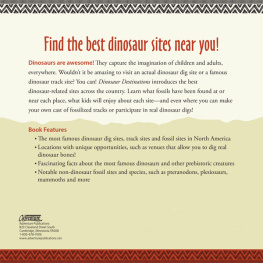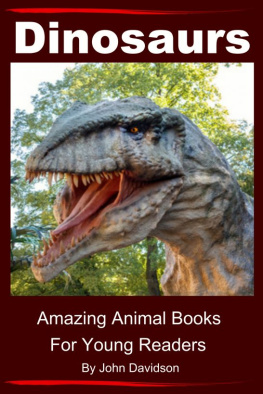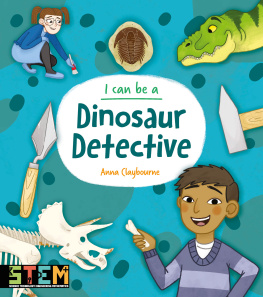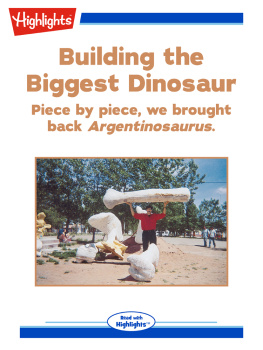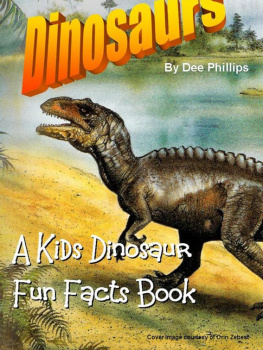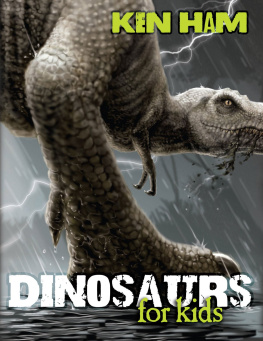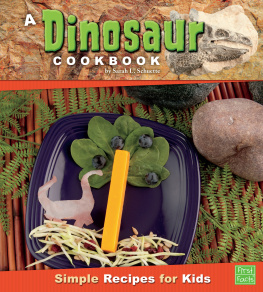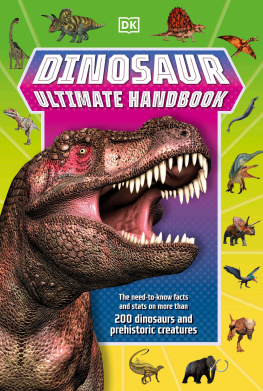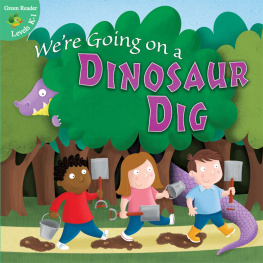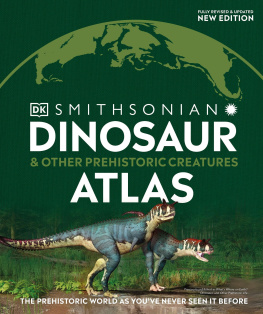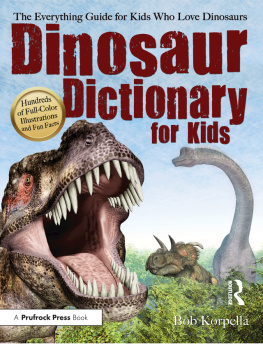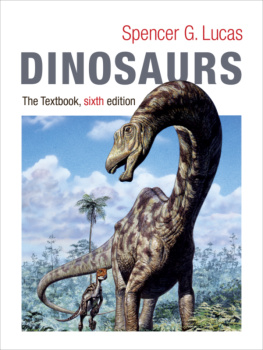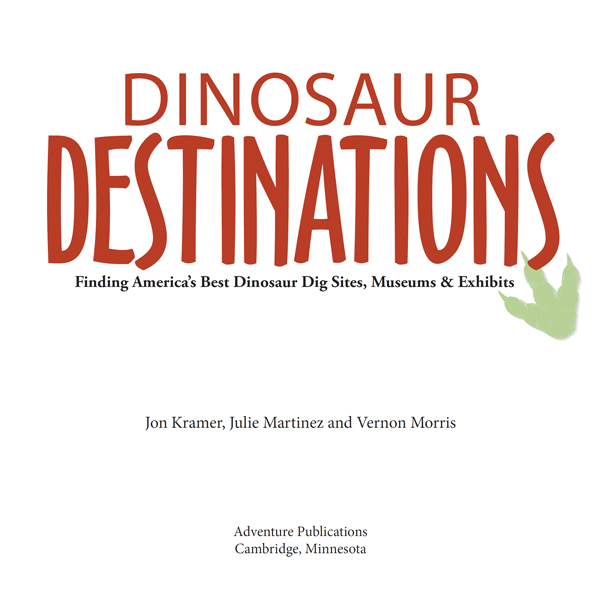
Photo Credits
Unless otherwise noted, all photos from the authors or royalty-free stock photography sites. Many thanks to the following people and organizations for use of their photos in this book.
Edited by Brett Ortler and Sandy Livoti
Cover and book design by Lora Westberg
Copyright 2016 by Jon Kramer
Published by Adventure Publications
820 Cleveland Street South
Cambridge, Minnesota 55008
1-800-678-7006
www.adventurepublications.net
All rights reserved
ISBN: 978-1-59193-517-9; eISBN: 978-1-59193-634-3
Acknowledgments
It takes a lot of grit, muscle, dedication, and patience to dig dinosaurs and it helps to have companions to share the load. There are many people who were instrumental in making it happen for us:
We never used his first nameit was always Mr. Shimizu. He came into our world at the exact right time, facilitating our jump into the world of dinosaurs. His enthusiasm and financial support were vital, and we are grateful for his patronage.
If not for Jeff Parker , the story of Potomac Museum Groups dinosaur digging in Wyoming would have been quite different and certainly not as remarkable as it was. Jeff provided us with immensely valuable assistance in many forms and, in his typical magnanimous nature, asked for little in return. Your kindnesses are appreciated and have been passed on to the next generation.
Bruce Erickson of the Science Museum of Minnesota has been a wise mentor and invaluable supporter of all our research effortsdinosaurian and otherwise. Through your encouragement we have seen more deeply into the past and the present. It has enriched us all.
Bill Mason ! You know who you are, and many more people need to as well. Bill has supplied the glue that holds it all together, both literally, through his company PaleoBond, and figuratively, through his unending generosity.
Our late friends Jack Marchant and his mother Marjorie opened their ranch and home to us for many memorable years. Well always remember the wild laugh and high hellos from Jack as he came riding up over the ridge with his dog Mary Jane jumping all over him as he visited us in camp each evening.
Once upon a time there was an educational and research company called Potomac Museum Group . It was a bold endeavor that is now fading and fossilizing in its own unique way. In addition to my fantastic business partner Hal Halvorson who was an inspiring companion and intrepid field directorthere were many employees of PMG who proved invaluable in digging dinosaurs with us. They helped shape the lives of hundreds of school kids and educators. These folks were generally underpaid and overworked but endured harsh conditions with a smile. Kent Cooper was a particularly valuable asset to us all and a great camp director. Some of the other outstanding supporters are (in alphabetical order only): Clayton Black , Ray Colby , Janine Halvorson , Kathleen Heaney , Wendy Kimmer , Kirk Leavesley , Julie Martinez , Mike McAneney , Vern Morris , Jennifer Pawlson , Jennifer Wickland . Others were: Calista , Camille , George , Jeff , a few Joes , Kate , Katie , Matt, Mike , Paul , Ryoichi , a couple Sashas , and several Toms . There are undoubtedly others whose names are not here and I take the blame for that. But be it resolved that we fully appreciate all who helped dig up ancient histories that created lasting memories.
Those were the dirty companions of digging. Now its time to call out those who helped get this little book off the groundor out of the ground, so to speak: First among these is our editor Brett Ortler , who has been more than just instrumental in this creationhes been a singular champion of this entire enterprise. Indeed, the idea originated with him and for that we are happily indebted. Its been a fun time digging up dinosaurs and memories with Brett! Sometime we might even take him along to dig up old boneshe certainly deserves that, at least!
How can we thank Gordon and Gerri Slabaugh for their encouragement and help over the years? What a ride its been! The many books weve worked on together have enriched us so much more than we could have imagined. The two of you will always have a place in our hearts. Well miss your wit, wisdom and smiles at work on future books but will look for you in the wild adventures ahead.
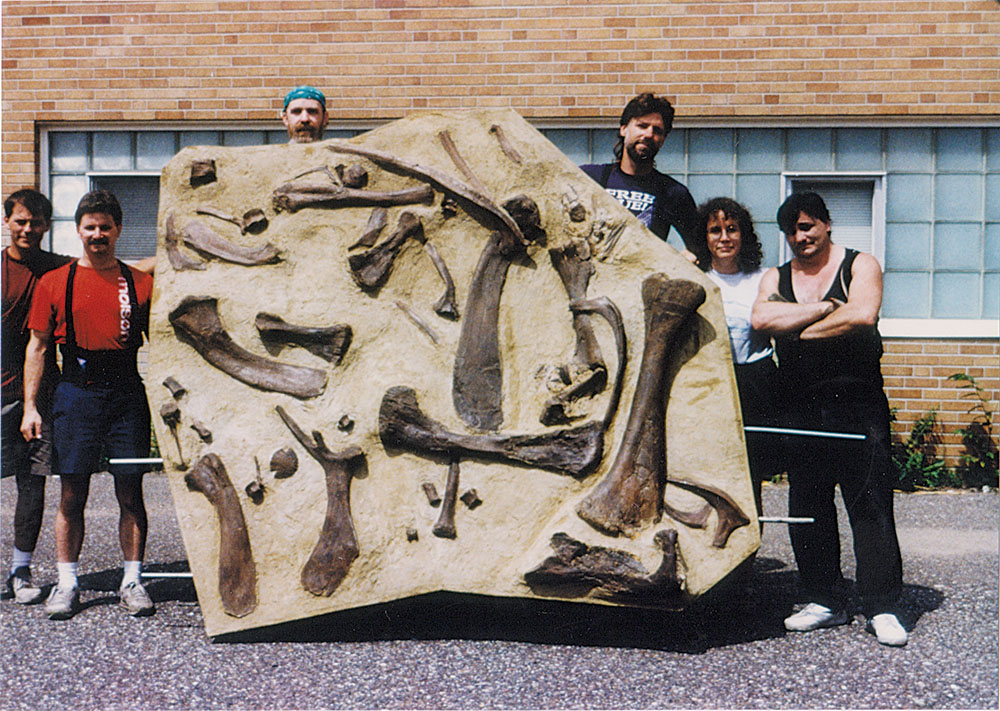
Contents
Introduction
A Decade Digging Dinosaurs
During the 1980s my friend Hal and I took a right turn and ended up 280 million years back in time. We were tracking an elusive lizard that had left footprints in the giant sand dunes that eventually became the Coconino sandstone of Arizona. By the end of the day we had collected evidence aplenty and the game was afoot. Over the next two decades we returned to the same area again and again to carry on the hunt. But we never found anything more than tracks and traces. Eventually our small company, Potomac Museum Group, collected hundreds of specimens of fossil trackways and brought them back to the Twin Cities for study. (We donated the collection to the Science Museum of Minnesota several years ago). Although these fossils predate dinosaurs by many millions of years, they hold important clues to evolution of both reptiles and mammals. One can learn a lot about animal structure and behavior by studying the tracks and traces they leave behind. We may not have found any bones, but our research was shedding new light on early reptile behavior.
As it happened, we had a retired Japanese friend who took a keen interest in our fossil research and would visit us daily as we cleaned, studied and documented our discoveries. Having a medical background, Mr. Shimizu was, naturally, more interested in bones than footprints and formulated an idea for a research project centered on dinosaurs, as its well known that one can learn a lot about an animal from its bones. The only problem was that Mr. Shimizu didnt have any bones to study, and museums were not parting with any.
One day while touring our lab, he asked us, Can you find dinosaur bones for me to study? Up until that point wed not really thought about looking for dinosaurs. Sure, theyre sexy and all that, but they are big and very costly to collect, not to mention storing the finds and cleaning and mounting the bones. Still, we had enough experience in the field to know that given enough time and funding we could, without doubt, locate a dinosaur site. Perhaps we can help each other out, Shimizu suggested. Suppose I bankroll your expeditions and donate to your research?
That sort of talk is music to the ears of any paleontologist!
So began our search. It eventually led us to a site in the high desert of Wyoming where, for ten years, we carried out the toilsome and rewarding ritual of digging dinosaurs all summer long. We excavated over 12 tons of bones, nearly all of which went to museums around the globe. Twelve tons might sound like a lot, but dinosaur bones are big and heavy and when you compare our effort to the over 700,000 tons dug out of Dinosaur National Monument, well thats just a drop in the old dinosaurian bucket. Still, it was enough for Mr. Shimizu and may have been for us as well. Well, maybe
We had no clue what we were getting into when Mr. Shimizu made his bold offer, but it became, above all, a very rewarding educational experience, one that we shared with hundreds of school kids and science teachers who joined us at our site. There was, for example, the time we found an Edmontosaurus tail bone that had been broken and healed twice in the animals lifetime. Then there was the discovery of tooth marks on some of the Triceratops bones, suggesting predation. And then we found a broken-off tooth embedded in a hadrosaur backbone well, I could go on and on.

